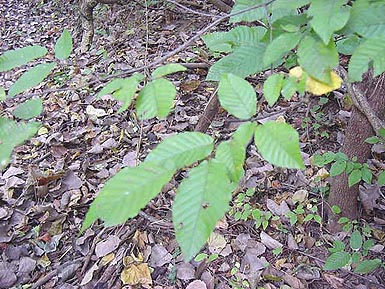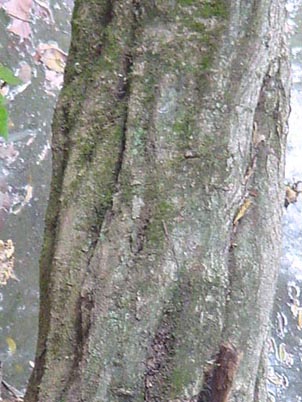Form: This is a small tree reaching 30 - 40 ft. in height and around 2 ft. in dbh.
Leaves:
Arrangement: alternate; simple, pinnate
Shape: ovate to oval
Margin: doubly serrate
Texture: glabrous below
Venation: parallel



Flowers and fruit: The fruit is a ribbed nutlet.
Distinguishing characteristics: Look for the muscular bark, alternate and doubly serrated leaves, and zigzagging twigs.
Range: Central Maine to central Iowa south to Florida.
Silvics: It is very tolerant of shade and grows on moist uplands, bottom lands, stream banks.
Ecological and cultural importance: It is also called ironwood or blue beech. The wood has been used for tool handles and golf club heads. Ruffed grouse and ring neck pheasants eat limited quantities of seeds. When acorns are scarce seeds are eaten by ducks.